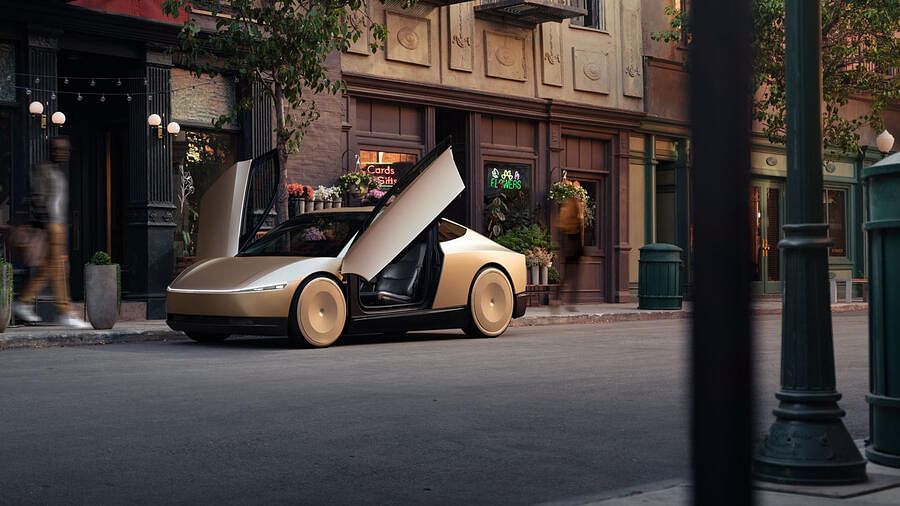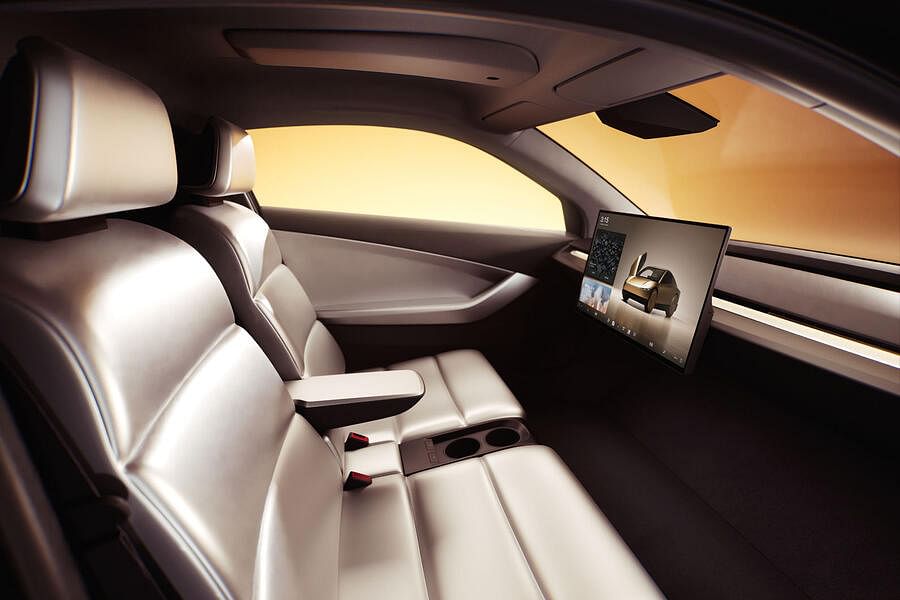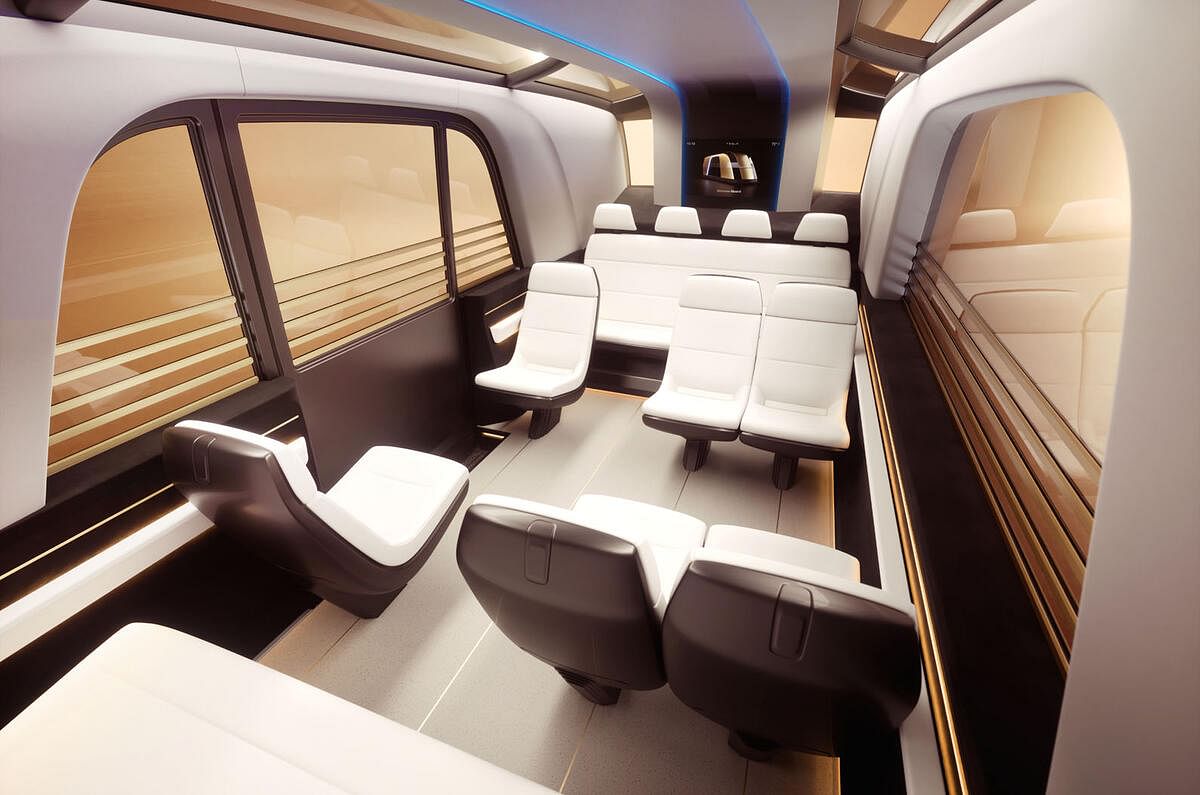Tesla reveals self-driving Robotaxi and Robovan
Compact, self-driving two-seater revealed alongside autonomous, 20-seat Robovan.
Tesla has finally revealed its long-promised 'Robotaxi' – a compact, self-driving coupé that shows the firm's vision for a global fleet of autonomous vehicles.
Tesla CEO Elon Musk showed off the autonomous Cybercab concept at an event in the US overnight, alongside a larger self-driving 20-seat van that's dubbed the Robovan.
The two vehicles, which have no steering wheels or pedals, are planned to operate using artificial intelligence and cameras rather than lidar sensors and in-built mapping software, as is more common on other autonomous vehicles.
They will also be capable of charging wirelessly, said Musk, so don't have charging ports like Tesla's conventional cars.
Touting the benefits of self-driving technology at an exclusive event called 'We Robot' in California, Musk said: “Think about the cumulative time that people spend in a car, and the time they will get back that they can now spend on their books or watching a movie or doing work or whatever.”

 Cybercab's cockpit is a minimalist affair, with two seats, two cupholders, an armrest and a large central touchscreen similar to that in the Model 3.
Cybercab's cockpit is a minimalist affair, with two seats, two cupholders, an armrest and a large central touchscreen similar to that in the Model 3.
To that end, the Cybercab's cockpit is a minimalist affair, with two seats, two cupholders, an armrest and a large central touchscreen similar to that in the Model 3. There's also a large boot at the rear – but following in the footsteps of the prismatic Cybertruck, the Cybercab has no rear window.
Musk said Tesla hopes to be producing the Cybercab by 2027 and selling it to consumers at a projected $30,000 (£23,000) but offered no categoric timeline for the Robovan. He did not confirm any plans to launch the vehicles outside the US.
En route to putting the two new self-driving vehicles in production, Tesla plans to have "unsupervised" FSD (full self-driving) technology certified for use in the Model 3 and Model Y by 2025.
The firm has recently rebranded its current-generation FSD software as 'supervised', meaning a human driver must be 'hands on' in the car and paying attention to the road at all times, after US safety authorities expressed concerns over the AI-powered system's ability to respond to unpredictable scenarios.
“We’ll move from supervised Full Self-Driving to unsupervised Full Self-Driving, where you can fall asleep and wake up at your destination,” Musk said. "It’s going to be a glorious future.”

 Larger Robovan uses the same tech to move 20 passengers around town.Musk says the Robovan is perfect for football teams.
Larger Robovan uses the same tech to move 20 passengers around town.Musk says the Robovan is perfect for football teams.
Musk envisions that the Cybercab and Robovan will operate similarly to ride-sharing services like Uber and Bolt, with people able to summon a vehicle using an app, and he suggested that owners of the cars will be able to hire them out.
The Cybercab has been in the works for years as part of Musk's bold plan to transition Tesla from a pure car firm to a robotics manufacturer, but its unveiling trails that of Mate Rimac's similarly conceived Verne robotaxi and comes four years after Musk had originally planned to have a fleet of robotaxis on the road.
Rival firms including Waymo, Cruise and Deeproute.ai already operate driverless taxis in various cities around the world, but no vehicle currently offers the sort of full autonomy (level five) that Musk plans for the Cybercab and Robovan.
Musk's uncharacteristic reluctance to confirm a planned launch date is recognition of the fact that Tesla's vehicles tend to come to market several years after he says they will. "I tend to be a little optimistic with timeframes," he joked at the Cybercab's unveiling.
Technical details of the Cybercab remain unconfirmed, but it is expected to use the new architecture that was destined for the long-mooted 'Model 2' – a conventional passenger car that was tipped to serve as an entry point to Tesla's ageing EV line-up before it was removed from the product plan in favour of robotaxis.
RELATED ARTICLES
Aisin to produce hybrid motor for Mitsubishi in Thailand
The hybrid drive motor and gearbox, will be produced at Aisin Powertrain (Thailand) Co for use in the Mitsubishi XForce ...
GM reports strong Q1 sales in China, demand for EVs and hybrids surges 53%
General Motors and its joint ventures in China have sold more than 442,000 units between January and March 2025.
Volkswagen to invest $580 million in Argentina, plots new pick-up truck for South America
Volkswagen is paving the way for the next generation of mid-size pick-up truck as a successor to the Amarok. The new mod...






 12 Oct 2024
12 Oct 2024
 6524 Views
6524 Views






























 Autocar Professional Bureau
Autocar Professional Bureau




